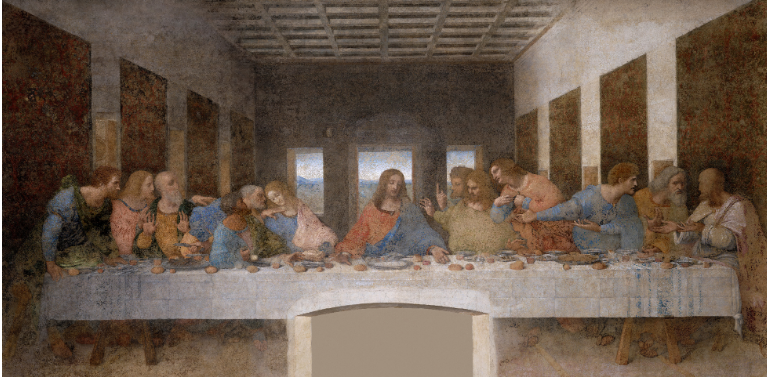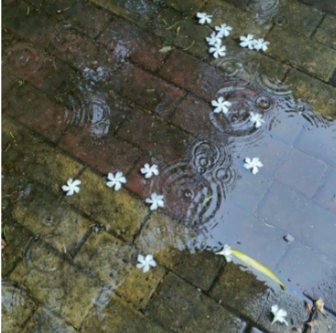But Can AI Do This? By Alexandra Rae
- Jun 4, 2023
- 6 min read
It can write your essays for you. It can play games, like tic-tac-toe or hangman, with you. It can process human languages and make successful predictions and prevent cyber attacks. It can tell the difference between a school bus and a truck – the kind your father may have driven to the grocery store with you in the passenger seat, holding the list your mother wrote before a computer replaced her cursive scrawl. It can recommend you movies to watch based on a list of your interests you type into its chatbox – no need to spend hours scrolling Netflix with your best friends, making fun of the film descriptions; half the fun of the evening now eradicated by the latest technology. It can trade your stocks at 9:30 a.m. sharp. It can recognize your face through a screen, even when you can no longer recognize it yourself. AI is capable of many things, but the one thing it can’t do is replace raw human experience.

From Ellen Schulz on Pinterest
Here is my take, as a writer and avid technology user, on our futures with AI – and why it doesn’t hold a single flame to the great fire that is the intelligence and creativity of the human mind.
AI was first introduced to the world in 1956 at the Dartmouth Summer Research Project on Artificial Intelligence. It is here that Allen Newell, Cliff Shawl, and Herbet Simon presented their program The Logic Theorist. According to “The History of Artificial Intelligence” by Rockwell Anyoha, this program was designed to mimic the problem solving skills of a human. This presentation was the catalyst for people to believe that AI was achievable and led to the following twenty years of trial, error, and an abundance of research on artificial intelligence and all the ways in which it could enrich our lives.
The next few decades were filled with successful projects that allowed scientists to get one step closer to understanding the possibilities of AI. Demonstrations such as General Problem Solver from Allen Newell and Herbet Simon & ELIZA from Joseph Weizenbaum hinted at artificial intelligence’s ability to solve problems and interpret human language. Flash forward to the 1990’s and early 2000’s, and AI could make decisions (such as IBM’s computer program Deep Blue that beat grand master chess champion Gary Kasparov in 1997) and recognize & display human emotions (like the robot Kismet developed by Cynthia Breazeal). Now that we live in the age of “big data”, artificial intelligence is everywhere: in marketing, banking, entertainment, technology and, recently, education.
Programs such as ChatGPT have infiltrated their way into academic spheres, and into the hands of students, quicker than anyone could have anticipated. According to apnews.com, ChatGPT is a language processing tool driven by artificial technology that generates responses to users in real time. Users have now come to use ChatGPT for writing emails, code, and essays. The latter has become an issue rather imperative for professors and school administrators to solve in order to uphold their standards of integrity & honesty for students to follow. Within the past few months, more and more students have been caught using ChatGPT for writing their essays and completing final exam projects – but who could blame them? With 1000 words coming to life at just the click of a button (these 1000 words having endless potential, from a succinct summary of WWII to explaining the complexities within the quantum-mechanical phenomena), using artificial intelligence is not only practical and quick, but the superior method to use for writing & creation rather than our own minds. Right?
Wrong.
Authoritative figures in academia & creatives alike are fighting back against recent discourse of artificial intelligence coming 1) an even bigger presence in the lives of students each time they use it for their essays and 2) to replace human artists.
For professors, stricter rules have begun to be set in place over Internet usage on assignments & cross checking of ChatGPT and other AI platforms is becoming a routine part of grading. Most people can agree that taking steps to prevent cheating is necessary – for artists, though, their dilemma is a bit more complex.
It would be easy to combat the insertion of AI in the worlds of art, writing & literature if everyone was in agreement that these spaces should be reserved for human artists. This, however, is not the case: many people admire AI art, so much so that social media accounts are now being dedicated to these pieces & people are willing to pay thousands of dollars to own it. AI is also becoming more popular for writers to use for their screenplays & novel ideas, attempting to produce work at a faster rate than writers who don’t use technology to interfere with their writing process. For Hollywood, who yearns for fantastical stories to display on the big screen, AI could become a goldmine of great ideas that is cheaper & faster to use over a team of human writers.
So should us creatives worry about being replaced by artificial intelligence? According to Oxford Internet Institute researcher Anne Ploin from The University of Oxford’s research study “Art for our sake”, machine learning will not replace artists because “human agency in the creative process is never going away. Parts of the creative process can be automated in interesting ways using AI…but the creative decision-making process which results in artworks cannot be replicated by current AI technology” (University of Oxford). Ploin drives this point further, stating that artistic creativity “is about making choices…and develops in the context in which an artist works…the world we inhabit. This cannot be replicated using machine learning, which is just a data-driven tool” (University of Oxford). What Ploin, and many other creatives, argue is that the decisions, changes, alterations, misfires and mistakes humans make in the creative process is essential to the creative work itself. As AI can only produce art and writing based on other art and writing that already exists on the Internet (and therefore cannot be originally creative), no comparison can truly be held between a machine that can only change what has already been done before and the human mind that can make a million changes to its own thoughts before ever picking up a pencil & setting it free for the world to see.
Humans, the most intelligent & selfish of any species, are tethered by a simple truth that no artificial intelligence will ever be able to take part in: we know what it feels like to bleed. To cry. To run through the gardens of our grandmothers’ with bees buzzing in our ears, the smell of fresh cut grass and pollen concocting the scent of what we come to know as the summers of our childhoods we’ll always yearn for when we’re older. We know the familiar upward tug the corners of our mouths feel when we see our favorite person. We know the scent of their hair and clothes and skin, our skin, your skin, my skin when it’s cold out and snow kisses our eyelashes and, in between chapped lips and fogged breath, we whisper “Is this Real? Are you Real? I Love You.” We know it’s real because it hurts.
Perhaps this secret is one that the people advocating for human artists over the use of technology hold close. It’s not just our capacity to feel pain and loss and love that make our ability to create special – it’s the fact that we can feel all of this at once and still not know what to make of it on the page; on the canvas; on the computer screen with fingers perfectly poised over the keyboard, waiting for the courage to strike one single letter. Even sitting here writing this article, I have backspaced and deleted and copy & pasted the thoughts spun from my brain that my fingers brought to life with a few thousand clicks that my eyes carefully watched over, searching for an unrealistic perfection – something that AI neither has the bandwidth or creativity to do.
Machines are created to be intelligent; to be perfect. Humans are created by other humans; lineages of varying intelligence & interests & creativity spreading throughout the world. A million mistakes already made – a million more waiting to be made the next time a human gains an idea and wishes to express it through paper; pen; a brush; sticky notes plastered on bedroom walls; a dusty keyboard begging to be used. There is no replacing the imperfection of the human mind.
To answer my own question: can AI do this? (And by this I mean, well, the “this” you and I face everyday; the act of creating with an idea in one hand and the threat of our pain, our own innate humanness to feel & remember all that we wished we didn’t, coming to haunt us spilling out from the other clenched fist). No. I don’t think it can.
Works Cited
AP NEWS. “EXPLAINER: What Is ChatGPT and Why Are Schools Blocking It?,” January 6, 2023. https://apnews.com/article/what-is-chat-gpt-ac4967a4fb41fda31c4d27f015e32660.
“Art for Our Sake: Artists Cannot Be Replaced by Machines – Study | University of Oxford,” March 3, 2022. https://www.ox.ac.uk/news/2022-03-03-art-our-sake-artists-cannot-be-replaced-machines-study.
John, Henry. “Things Artificial Intelligence (AI) Can and Cannot Do.” ai4beginners.com, June 12, 2022.
SITNFlash. “The History of Artificial Intelligence.” Science in the News (blog), August 28, 2017. https://sitn.hms.harvard.edu/flash/2017/history-artificial-intelligence/.
Alexandra Rae (she/her) is a 20-year-old aspiring writer from the U.S. studying Creative Writing and Public Relations & Advertising at Point Park University. She loves exploring all genres, but her favorites are Creative Non-Fiction and Poetry. She is also a content writer for The Young Writer's Initiative (@TYWI on Instagram) and runs her own writing account as well (@theresonationofalexandra). Her biggest writing inspirations are Taylor Swift, Lauren Slater, Stephen King, and Joy Harjo.



Comments